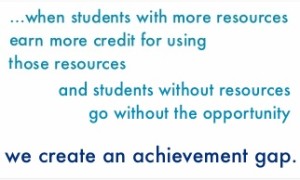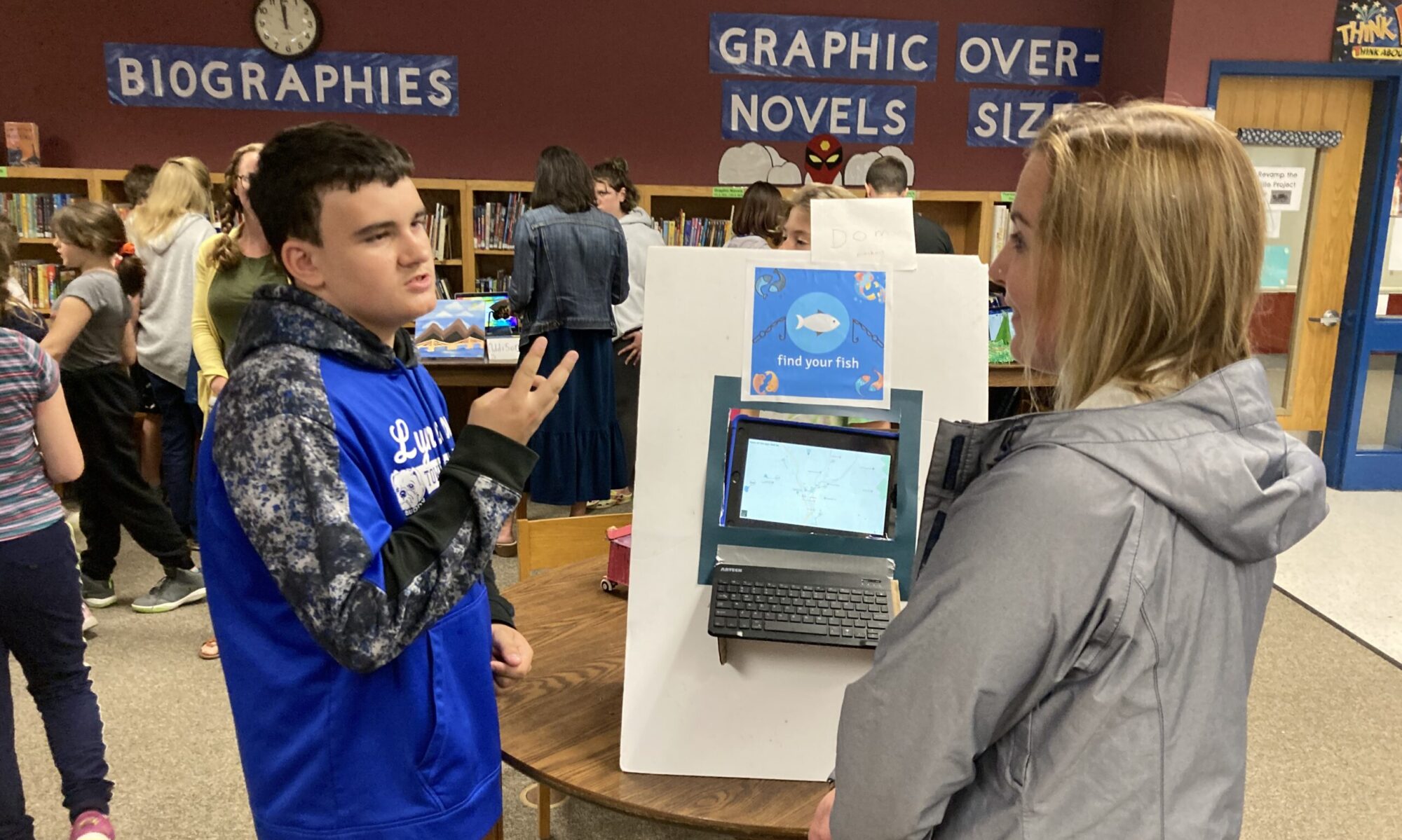What is the worst consequence of our best idea?
That’s a question that Chris Lehmann, founding principal of the Science Leadership Academy, asks his team when trying out new strategies in their high school. It’s a question I want to pose to all teachers when considering issues of equity in our classrooms.
I believe that teachers who offer extra credit are well-intentioned. We want our students to have opportunities to demonstrate proficiency, strengths and interests. These opportunities might look like additional class work, volunteering, attending community events, or reading and researching related topics. In short, we want our students to continue their learning outside of our classrooms and beyond the scope of our curricula.
It seems like a pretty good idea.
This post over on Edutopia got me thinking about the worst consequences of our best ideas. There’s been a lot written about whether extra credit is a pedagogically sound tool — but I’m interested in whether extra credit creates a dilemma when we consider equity.
Equity in our schools means that every child has an equal opportunity to access his or her education. When we offer extra credit for additional learning opportunities, we assume a lot of things about our students.
We assume that students have the time to read an extra book at home, rather than devoting that time to caring for siblings or for their own children.
We assume that our students can spare a few dollars to go see a play or visit a museum, rather than that money going towards basic necessities for themselves and their families.
We assume that our students have completed their basic class expectations and can go the “extra mile,” rather than struggling to keep up due to learning disabilities, social, emotional or developmental special needs, or the pressures of daily life when you live in poverty.
When we offer extra credit, we’re really offering it to students with access to resources: time, money, social capital, transportation, support systems.
Even when extra credit is simply an additional question at the end of a quiz, we only offer that question to students who can complete the quiz with confidence in the allotted time. Even when extra credit is something a student can do during the school day, we only offer that credit to students who already possess the executive functioning skills to incorporate what is “extra” with what is expected.
Of course we want students to engage in learning opportunities outside of school, to be independent, to take initiative. But awarding credit for these things is problematic.
Why do we choose to assign credit to these activities? As a system of education, we’ve decided that credit means something important. Credit accrual determines whether a student graduates high school, and we know that graduating high school translates to real opportunities and real money in the workforce.
When we give extra credit for learning opportunities, we place systemic value on those activities. The idea is that we motivate students to increase academic engagement through placing this value on outside-of-classroom learning activities.

But when students with more resources earn more credit for using those resources, and students without resources go without the opportunity, we create an achievement gap that has little to do with actual achievement. Extra credit may seem like a drop in the bucket, but when we let those drops add up, students without resources fight to stay afloat.
Instead of widening an already untenable gap for students in poverty, let’s turn our focus away from extra credit. Let’s focus on making our current, basic expectations equitable, and help all students learn and grow. Let’s foster relationships in our classrooms that spark a love of learning, rather than using a carrot of credit. Let’s help students without resources find and use resources they need, rather than create more missed opportunities. If we value outside or “extra” learning opportunities, let’s work together with our communities to increase access for all students.
And let’s continually ask ourselves: what are the unintended consequences students may experience, even when we mean well? The constant asking of and struggling with this question is the way to move ourselves toward a more equitable school for all.



.@shevtech examines the question: Is extra credit an equity issue? http://t.co/fwIyfTJpfp A must-read for educators. #edchat
RT @innovativeEd: .@shevtech examines the question: Is extra credit an equity issue? http://t.co/fwIyfTJpfp A must-read for educators. #edc…
My guest post on the Tarrant Institute blog: http://t.co/s3dFBy77W5 (feat. a @chrislehmann -ism)
RT @innovativeEd: .@shevtech examines the question: Is extra credit an equity issue? http://t.co/fwIyfTJpfp A must-read for educators. #edc…
RT @innovativeEd: .@shevtech examines the question: Is extra credit an equity issue? http://t.co/fwIyfTJpfp A must-read for educators. #edc…
Is extra credit an equity issue? – Innovation: Education http://t.co/UfWzt5CP05 Good thinking from @Shevtec
For the p.m. crowd, check out this post on extra credit and equity by @shevtech http://t.co/Shevtz9ydJ #vted
Is extra credit an equity issue? http://t.co/s3dFBy77W5 #alted #edchat #cpchat
RT @innovativeEd: .@shevtech examines the question: Is extra credit an equity issue? http://t.co/fwIyfTJpfp A must-read for educators. #edc…
Is extra credit an equity issue? http://t.co/SwaNmWb3yw